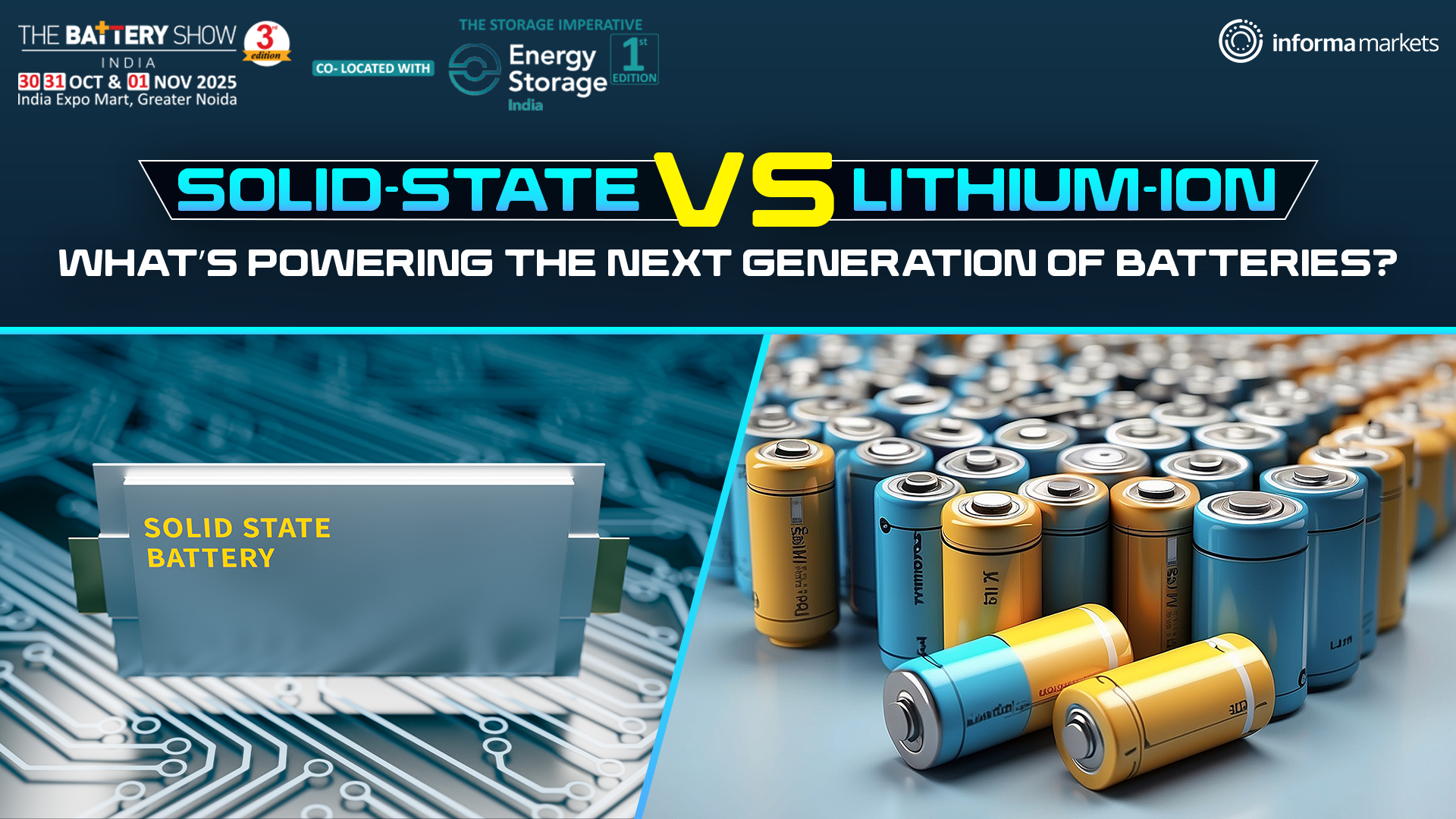World energy policy makers have recently pointed to 2025 as an inflection point for battery technology. Breakthroughs in energy density, material science, safety, and sustainability are transforming how batteries are designed, built, and deployed. Those changes affect not just electric cars, but also long-haul grid storage and the electronics we carry every day. Each year, it seems, power delivery gets a little lighter, a little quicker, and a lot greener.
2025 Innovations to Watch
1. Solid-State Batteries: The Next Big Leap
Researchers are swapping the familiar liquid electrolyte for a solid counterpart, and the consequences are dramatic. Battery packs can hold more energy without the usual weight penalty, charge in minutes rather than hours, and resist ignition under extreme use. Company prototypes showcasing that combination are expected to hit the road- and the runway-in limited numbers by late 2025.
Because the solid format stays stable at 150 degrees Celsius, automotive engineers no longer worry as much about thermal runaway. That safety margin, coupled with early signs of declining manufacturing costs, is luring traditional carmakers and boutique aerospace ventures alike. Some analysts now predict that solid-state chemistry will move from premium pilot fleets into everyday commercial supply chains within a handful of production cycles.
2. Sodium-Ion Batteries: The Lithium Alternative
A growing number of researchers and manufacturers are lifting sodium-ion chemistry from the lab bench and aiming it squarely at commercial markets. Sodium is inexpensive, easy to source, and undisturbed by the geopolitical pinch that already shadows lithium supply arteries. Major Chinese and European cell builders now express confidence that product packs appearing in 2025 will match key performance metrics of established lithium-ion modules.While they currently offer lower energy density than lithium-ion, sodium-ion batteries boast superior performance in cold climates and are non-flammable, making them a safe and scalable solution for stationary storage and two-wheeler EVs.
3. Battery Recycling & Second-Life Systems
With the exponential rise of battery deployment comes a parallel challenge: battery waste. In response, 2025 is expected to witness major progress in recycling technologies and second-life battery applications.
New hydrometallurgical and direct recycling methods are being developed to recover critical materials like lithium, cobalt, and nickel with higher purity and lower energy consumption. Simultaneously, second-life battery solutions are being adopted to repurpose used EV batteries for stationary energy storage.
This shift not only extends battery lifespan but also promotes a circular economy and reduces dependency on virgin raw materials
4. AI-Driven Battery Management Systems (BMS)
The power stored inside a lithium-cobalt cell is only realized through the algorithms that govern it. By 2025, engineers are reporting that machine-learning routines can extend pack life while boosting responsiveness to real-world conditions.
Predictive analytics now profile temperature spikes, calibrate charge currents, and even learn how an individual driver prefers to accelerate. That responsiveness is critical as cars, phones, and grid nodes constantly swap battery status data over wireless links. In the near term, fleet operators and solar-farm managers expect these smart controls to save both dollars and downtime.
5. Ultra-Fast Charging Technologies
Range anxiety will dwindle the moment a battery is refueled nearly as quickly as a gas tank. Researchers working with silicon-drenched anodes and exotic liquid electrolytes are already hitting the 80-percent mark in under ten minutes.
Multiple 2025 production cars have announced ultra-fast ports, and highway corridors of 350-kilowatt chargers are under contractor review from Seoul to Seattle. The rapid uptake promises to draw legions of skeptics into the EV fold.
None of this can succeed without bulletproof thermal shields and redundancies, so every high-speed station now includes those safeguards as standard. Together, they are quietly rewriting what drivers should expect, not what they hope for.
Preview Tomorrow's Energy Breakthroughs at the Battery Show India 2025
Anyone eager to examine the latest in battery tech face-to-face can do so in October 2025. The Battery Show India (TBSI) is said to be the country's signature gathering for advanced storage hardware, and its exhibitors promise to unveil next-generation systems that will redefine today's limits.
The exhibition will unfold over three full days-30 and 31 October plus 1 November-at Greater Noida's India Expo Mart & Centre.
The Battery Show India (TBSI) 2025 isn’t just an exhibition — it’s a deep dive into the full spectrum of battery innovation. From core battery components and raw materials to advanced battery pack assembly and battery manufacturers, TBSI 2025 brings the entire ecosystem under one roof. With a special focus on Li-ion battery manufacturers, attendees will get a close-up look at evolving chemistries, high-performance cell formats, and scalable manufacturing practices. Also on display are Battery Energy Storage Solutions (BESS) — crucial for grid stability, renewable integration, and smart city infrastructure. In an industry where safety, efficiency, and sustainability are non-negotiable, innovations in battery management systems (BMS) and recycling technologies will take center stage. Whether you're an engineer, decision-maker, or tech enthusiast, this is your chance to engage directly with the technologies powering India’s clean mobility and energy future. TBSI 2025 is where suppliers, integrators, and policymakers come together to shape the next phase of electrification.
Solid-State vs Lithium-Ion: What’s powering the next generation of batteries?
The planet is racing towards electrification. From electric vehicles and intelligent devices to renewable energy storage and industrial use, the need for high-performance batteries has never been greater. At the fulcrum of this revolution are two reigning battery technologies: lithium-ion and the fast-rising solid-state batteries. While lithium-ion has fueled the energy revolution for more than three decades, solid-state has the potential to be the technology that defines the next.
But what really distinguishes them? And which will drive the future?
Here, in this in-depth look, we delve into the pros, cons, and innovation directions of both battery types and how they are transforming the energy landscape in 2025.
Lithium-Ion Batteries: The Established Powerhouse
Lithium-ion (Li-Ion) batteries are the go-to choice for everything from cell phones to electric vehicles. Unveiled in the 1990s and produced commercially at scale during the past two decades, their growth has driven industries.
Top Lithium-Ion Benefits:
High energy density: Li-ion batteries contain a great deal of energy in a small package.
Lightweight: Perfect for portable use such as EVs and drones.
Proven scalability: Global manufacturing systems are highly efficient for lithium-ion production.
Relatively low cost per kWh: As economies of scale increase, prices have fallen dramatically.
Challenges with Lithium-Ion:
Safety issues: Flammable liquid electrolytes have a risk of overheating and fire.
Limited lifespan: Charge/discharge cycles break down over time.
Raw material availability: Cobalt and lithium procurement are issues due to sustainability and ethical considerations.
Thermal management requirements: Li-ion packs need strong systems to handle heat and avoid runaway reactions.
Despite these drawbacks, ongoing developments in battery management systems (BMS), recycling technologies, and cathode/anode chemistry have maintained lithium-ion's competitiveness. In 2025, Li-ion remains the leader in both the EV and consumer electronics markets because of its maturity and accessibility.
Solid-State Batteries: The Future Contender
Solid-state batteries (SSBs) are generally regarded as the next big breakthrough in battery technology. As their name implies, they substitute the fire-prone liquid electrolyte used in Li-ion batteries with a solid electrolyte, opening up a range of new benefits.
Why Solid-State Is Making Waves:
Higher energy density: 2x as much energy storage as traditional Li-ion.
Improved safety: Solid electrolytes do away with the threat of leakage, fire, or explosion.
Increased lifespan: Greater degradation resistance = more battery life.
Potential for quicker charging: Prototypes have shown charging in under 15 minutes.
Present Limitations of Solid-State:
Expense: Producing solid-state batteries is still costly and nonscalable.
Compatibility of materials: Identifying a suitable solid electrolyte with conductivity, stability, and manufacturability is still an R&D issue.
Commercial availability: Applications remain mostly at prototype or pilot production levels.
In 2025, solid-state batteries will emerge in limited high-end markets: luxury EVs, aerospace, the military, and specialty electronics. But wide-scale commercial deployment remains 2–5 years off.
Who's At the Forefront in 2025?
Lithium-Ion remains king of mass-market EVs, smartphones, and energy storage systems. CATL, LG Energy Solution, and Panasonic are at the forefront, expanding boundaries with high-nickel cathodes, silicon anodes, and cobalt-free chemistries.
Solid-State is in hot pursuit by disruptors such as QuantumScape, Toyota, Samsung SDI, and Solid Power. Legacy OEMs and startups are heavily investing in pilot lines, with the intent to build volumes by 2027.
Coexistence, Not Competition
In 2025 and thereafter, solid-state and lithium-ion aren't adversaries — they're parts in a multi-tech future. Think of solid-state as the long-distance runner and lithium-ion as the consistent all-arounder. Lithium-ion will still cater to mainstream markets economically, but solid-state will shine where high-end performance, space efficiency, and safety become paramount.
Witness the Future Unfold at The Battery Show India 2025
Curious to see these technologies in action? Want to understand how global innovators are pushing both lithium-ion and solid-state boundaries?
Then The Battery Show India (TBSI) 2025 is the place to be
At TBSI 2025, you won't just see what’s new — you’ll see what’s next. This year’s show shines a spotlight on critical segments shaping the battery industry’s future: from battery laser technology, vital for precision welding and high-speed production, to charging infrastructure, which forms the backbone of EV adoption. As battery demand surges, so does the need for smart pack integrators, efficient raw material sourcing, and circular economy solutions like battery recycling. Innovations in battery management systems will be central to ensuring thermal safety, extended lifespan, and real-time data optimization across applications. For those in energy storage, dedicated exhibits on Battery Energy Storage Systems (BESS) will showcase scalable, modular solutions tailored for grid-level and commercial use. Whether you're sourcing from a battery pack manufacturer, or looking to retrofit with smarter charging tech — TBSI 2025 offers unmatched insight and access. Every segment represents a piece of the electrification puzzle, and they all come together here.










